One of the most interesting aspects of contemporary art fairs, if they are adequately representative of the international scene, is the fact that they offer the visitor the opportunity to perceive trends and aesthetic orientations of artistic research before they are received and formalized by critical studies and museum retrospectives. What is offered, therefore, is not a recognition of the creative expression tout court, but a cross-section of the lines of force of the art system, captured in their making and still subject to second thoughts, deviations and reversals also linked to the unpredictable changes in the global economic-political situation. Although the era of individualism and the telematic Babel has erased the tendency of artists to recognize themselves in movements animated by shared values, fomenting the anxiety for the elaboration of an unmistakable expressive figure for its character of uniqueness, it is undeniable that some recurrences and convergences (more or less spontaneous or driven) distinguish the cultural identity of a given period and that their detection constitutes the first step to place the current artistic production in a perspective of historicization. Now that the twenty-ninth edition of Artissima (the only fair in Italy exclusively dedicated to experimental, research and cutting-edge art) is about to end, we have used the exhibition proposal that we have been able to observe as a field of investigation to identify some directions in where the most up-to-date research branches out.
From this edition of Artissima emerges, in our opinion, a great return of painting, in particular that of the figure, perhaps in compliance with the well-known cliché according to which it is the most classic of safe-haven assets in times of crisis (such as which are darkening the destinies of the world and of the western hemisphere in particular). After years in which we have been visually congested by a reworking lightened in intent and with updated materials of the geometric abstractionism of the historical avant-gardes by younger artists and by reassuring monochrome explorations of the possible shades of texture and brushstroke that a surface can accommodate, the human being returns therefore as a ductile pictorial object to be liquefied, dismembered, hybridized or deformed.
Existential anxieties can be projected into the body, as Sebastiano Sofia does (Boccanera Gallery), in whose paintings the human being seems to dissolve in sulphurous nightmares in which obsessions overlap in transparency, or as it happens also in the metamorphic subjects by Alicia Reyes McNamara (Niru Ratnam Gallery), where an expressionist symbolism vaguely reminiscent of exhausted modernist elegances is combined with a visual research on Mexican mythology. Olena Pronkina’s dreamy mental landscapes (SANDWICH Gallery) also recall the most classic symbolism, in which the human being appears as a timid projection of an almost floral emotional condition. The creatures imagined by Marcella Barceló (pal project) also inhabit the dream, which seem to wonderfully explore enchanted settings in which the vegetation resembles the enlargement of an organic tissue observed under a microscope. Painting as an escape into an imagined reality in which it is lighter to live finds its paroxysm in the intertwined compositions of blurred bodies by Mia Chaplin (Whatiftheworld), real carnal epics ready to conquer even the largest surfaces with a continuous writing to the limit the indifferentiation between figure and background. Shafei Xia (P420 gallery) is extraordinary for imaginative prolificacy and for the ability to manage a spontaneous and multiple figuration with a perfect spatial orchestration: the young painter creates intriguing choreographies of animals and humans in which voyeurism is mixed with an innocent adolescent eroticism.
If the freedom of a painting freed from a strong drawing or compositional structure seems to be the most suitable expressive language to directly access the dimension of dream or nightmare, some researches play with a more articulated figuration to detail the emergence of these instances with more precision. Among these, we point out the artificially geometrical drifts by Daniel Pitín (Charim Galerie) and Brandon Lipchik (Robert Grunenberg), in which the bodies appear as envelopes without thickness that recall the sampling of textures and the absence of consistency typical of virtual reality. Some painters seem to refer to a more traditional figuration, but only to dismantle the certainties from the inside. This attitude is emblematic for the alienating situations imagined on the canvas by Iva Lulashi (prometeogallery), which subtly allude to carnal oppression and emotional abuse in which women are both victims and perpetrators of themselves. The same ambiguity, connected to a realistic figuration in its presuppositions, is found in the poetics of Alessandro Fogo (Cassina Projects), author of enigmatic visions in which the narrative allusion is frozen in a labyrinthine plurality of equivocal details. Misunderstanding and doubling are at the center of the figurative language of Zohar Fraiman (Galerie Russi Klenner), whose work investigates the disconnect between the analogue and the digital world in the perspective of a surreal definition of an elusive female identity which is strongly linked to the aesthetics of social networks. The virtual dimension and its ambiguous negation through the illusion of a material mimesis is what characterizes the poetics of Damien Meade (CAR DRDE), whose intriguing portraits of impossible sculptural models ferry the human features into objects to show their anodyne essence. We also mention here the photographic portraits by Teresa Giannico (Viasaterna) in which the apparent adherence to the truth of the whole is subtly contradicted by blurring and localized insertions of epidermis of different matrix which show how the digital re-elaboration process is largely attributable to painting.
In this profusion of bodies and pictorial personifications, we now point out some exceptions to this dominance of the human-non-human that contribute to confirming the vitality of painting and its ability to constantly renegotiate its own borders and to re-invent the visible in a infinite formal reworking. The beautiful stand of Gallery Sofie Van de Velde dedicated to Charline Tyberghein stands out in the general rarefaction of abstract and geometrical researches. The artist’s expressive language stands out for its virtuosity in camouflaging evocations of common objects, cutting out their absence in geometric grids in which the flatness of the color patterns is contradicted by a surprising illusion of depth. We conclude this excursus, in which it is remarkable to underline that almost all the works to which we have referred were made in 2022, citing the imposing paper drawings by Giulia Dall’Olio in the monographic stand of Studio G7, luxuriant samples of an imagined and remembered nature that explode in the zeroed space-time of the pictorial plane, satisfying the ancestral human need for immersion and dispersion.
Info:
Artissima
4 -6/11/2022
Slot 1: 12.00 – 16.00
Slot 2: 16.00 – 20.00
Oval Lingotto
Via Giacomo Mattè Trucco, 70 Torino
www.artissima.art
Cover image: Shafei Xia, Miss Pig, 2022, painted and glazed ceramic, courtesy the artist and P420, Bologna
 Mia Chaplin, Soft nails, 2022, oil on canvas, courtesy WHATIFTHEWORLD
Mia Chaplin, Soft nails, 2022, oil on canvas, courtesy WHATIFTHEWORLD
 Shafei Xia, Stop arguing, let’s sing, 2022, watercolor on sandal paper mounted on canvas, courtesy the artist and P420, Bologna
Shafei Xia, Stop arguing, let’s sing, 2022, watercolor on sandal paper mounted on canvas, courtesy the artist and P420, Bologna
 Daniel Pitín, Adela in a pool, 2022, mixed media on canvas, courtesy Charim Galerie
Daniel Pitín, Adela in a pool, 2022, mixed media on canvas, courtesy Charim Galerie
 Brandon Lipchik, Swimmer caught in A Storm boarder, 2022, acrylic and oil on canvas courtesy the artist and Robert Grunenberg Gallery
Brandon Lipchik, Swimmer caught in A Storm boarder, 2022, acrylic and oil on canvas courtesy the artist and Robert Grunenberg Gallery
 Giulia Dall’Olio, installation view at Hall DS | Booth 14 | Sezione Disegni, Galleria Studio G7
Giulia Dall’Olio, installation view at Hall DS | Booth 14 | Sezione Disegni, Galleria Studio G7
 Charline Tyberghein, Let’s get this dread, acrylic paint on canvas, courtesy Gallery Sofie Van de Velde
Charline Tyberghein, Let’s get this dread, acrylic paint on canvas, courtesy Gallery Sofie Van de Velde
 Sebastiano Sofia, The mermaid, 2022, oil on canvas, courtesy Boccanera Gallery Trento/Milano
Sebastiano Sofia, The mermaid, 2022, oil on canvas, courtesy Boccanera Gallery Trento/Milano
 Alicia Reyes McNamara, Bloom III, 2022, oil on canvas, courtesy the Artist and Niru Ratnam Gallery, London
Alicia Reyes McNamara, Bloom III, 2022, oil on canvas, courtesy the Artist and Niru Ratnam Gallery, London
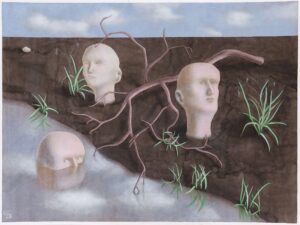 Olena Pronkina, Swamp, 2022, acrylic on paper, courtesy SANDWICH gallery
Olena Pronkina, Swamp, 2022, acrylic on paper, courtesy SANDWICH gallery
 Marcella Barceló, Opuntia ficus-indica, 2022, acrylic and nail polish on canvas, courtesy pal project & La Méditerranée
Marcella Barceló, Opuntia ficus-indica, 2022, acrylic and nail polish on canvas, courtesy pal project & La Méditerranée
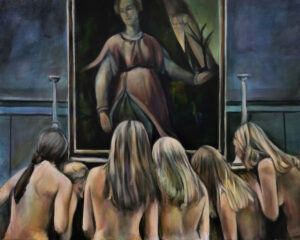 Iva Lulashi, Sinossi, 2021, oil on canvas, courtesy the artist and Prometeo Gallery Ida Pisani, Milan-Lucca
Iva Lulashi, Sinossi, 2021, oil on canvas, courtesy the artist and Prometeo Gallery Ida Pisani, Milan-Lucca
 Alessandro Fogo, The brightest hour, 2022, oil on linen courtesy the artist and Cassina Projects, Milan
Alessandro Fogo, The brightest hour, 2022, oil on linen courtesy the artist and Cassina Projects, Milan
 Zohar Fraiman, Selma and Patty, 2022, oil on canvas, courtesy Zohar Fraiman and Galerie Russi Klenner
Zohar Fraiman, Selma and Patty, 2022, oil on canvas, courtesy Zohar Fraiman and Galerie Russi Klenner
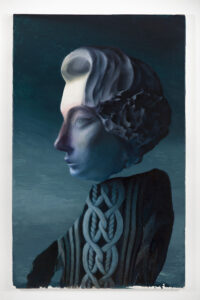 Damien Meade, Untitled DM216, 2021, oil on canvas, courtesy CAR DRDE
Damien Meade, Untitled DM216, 2021, oil on canvas, courtesy CAR DRDE
 Teresa Giannico, Girl on green, 2022, print on cotton paper, courtesy Viasaterna
Teresa Giannico, Girl on green, 2022, print on cotton paper, courtesy Viasaterna
Graduated in art history at DAMS in Bologna, city where she continued to live and work, she specialized in Siena with Enrico Crispolti. Curious and attentive to the becoming of the contemporary, she believes in the power of art to make life more interesting and she loves to explore its latest trends through dialogue with artists, curators and gallery owners. She considers writing a form of reasoning and analysis that reconstructs the connection between the artist’s creative path and the surrounding context.


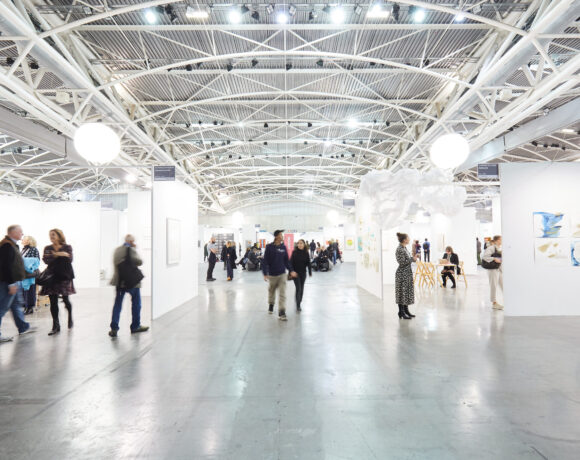
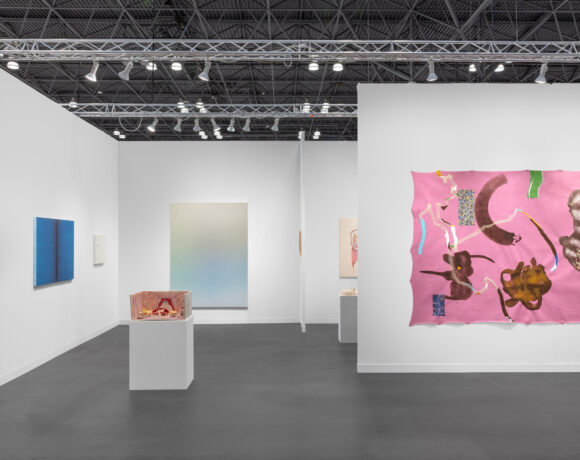
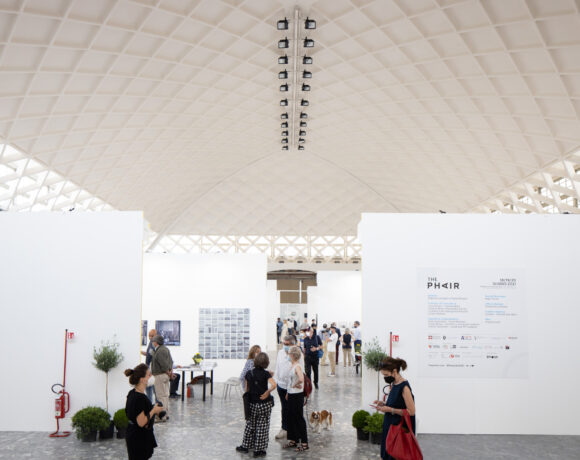

NO COMMENT